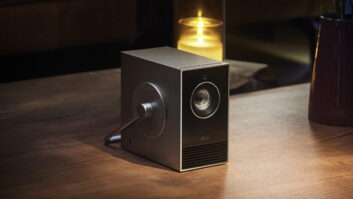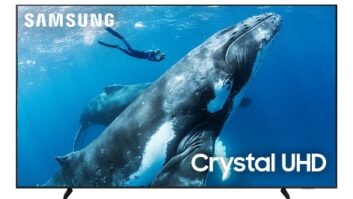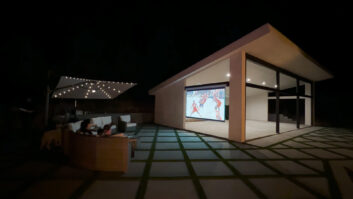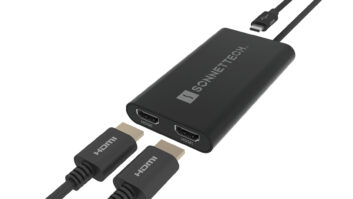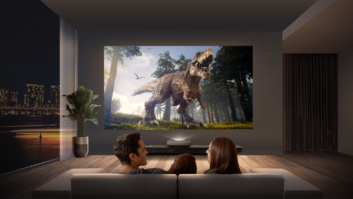
With CEDIA EXPO 2014 now behind us and the major trade show event schedule more or less done for the year, this seems like a good time to take a step back and look at one of the most important, but perhaps somewhat now forgotten, or at least taken for granted, aspects of the installation world over the past 12 months or so: HDMI and connectivity. After all, it’s now more than a year since its most recent incarnation, “HDMI 2.0,” was introduced and perhaps to many, it is now a bit old hat as we move on to other things.
It shouldn’t be.
How you provision for what I’ll broadly call “HDMI” and what pieces of gear you use to do that may be key to the long-term compatibility of key parts of the systems that you install or upgrade.
As a refresher, the most significant advancement in the current HDMI spec is the ability to carry a wide palette of “4K” content in the form of 2160/60p. Yes, there are other important improvements, such as increased audio channel capability, extensions to the CEC system, “dual viewing,” support for 21:9 screens, ‟Dynamic Auto Lip-Sync,” and even support for the ITU Rec. BT. 2020 color standard. For all of that, however, the one element that everyone is focusing on is “4K Support,” as this is key to making native 4K content available through external set-top products rather than simply being delivered directly to the display via IP.
Of course nothing is ever simple, and while we work in an industry that revolves around standards, all too often those standards allow many ways of doing something. Or, stated another way, our work often requires many standards. That is exactly the case with 4K connectivity where the choice of one piece of gear and its standards may not align with another or be compliant with the requirements of the content to be carried, delivered, and ultimately decoded, viewed, or listened to.
Remember 3D? It was only a few years ago, but it has fallen out of favor in consumer video displays and content. There are many reasons for that, but standards problems weren’t one of them. Once the HDMI 1.4b standard was implemented, it didn’t matter if the source material was “over-under,” “side-by-side,” or “frame packed.” The then-current HDMI standard accommodated all of them. I wish we had the same situation with 4K/ UHD.
Part of the problem is that recent HDMI standards have been more “a la carte” rather than “fixed menu” in design. Once a product met the baseline requirements, the product’s designers could select which, if any, additional features would be offered. That is undoubtedly one of the reasons why HDMI LLC no longer allows the use of “Version” in the description of a product with HDMI. Rather, they want the product to carry some notation of which features it contains, with the presumption that those not listed are not available. With 2160/60p video having at least eight different possible combinations, this becomes problematic.

This Sony ES Series AVR has two inputs and two outputs with 4K and HDCP 2.2, but they only have ~9Gbps bandwidth.
At the bottom rung of the ladder, there is 2160/60p/4:2:0 sampling/8-bit color. This requires some of the technologies of the new HDMI 2.0 format, but with a clock speed of about 300MHz and a bandwidth requirement in the range of 8.91 Gbps, it is possible for some current HDMI chips to carry the firmware needed to accommodate it. However, as you move up the standards ladder to 10-, 12-, or 16-bit color, 4:2:2 or 4:4:4 color sampling, the bandwidth increases along with the need for the new technology developed for HDMI 2.0 so that it may carry the information. And, yes, there are silicon solutions available to do that, and at least three AVR brands currently use them to deliver all the information that HDMI 2.0 is capable of. Sounds great, right? No, not so fast.
This extraordinarily high image quality means that any native content in those forms also provides superb masters for use in making unauthorized, illegal, “pirate” copies. That is something the Hollywood community obviously wants to prevent, and it led to the development of a new version of the High Bandwidth Digital Content Protection system, probably better known to you as HDCP.
Re-engineered HDCP
HDCP has been around for almost 15 years, first protecting content sent over early DVI connections, and later updated to work over HDMI, DisplayPort, and other digital and IP-based connections. Although many associate it with HDMI, it was developed by Intel and is licensed separately from HDMI. Using sophisticated encryption and key-exchange between devices, it is the first line of defense against content piracy, and in the past, it has been somewhat of a Maginot: thought to be impervious but ultimately breached and over run.
To avoid the problems caused in recent years by the key codes being cracked, broken, or released, the current HDCP Version 2.2 has been engineered using a new authentication protocol and higher bit encryption algorithms, among other defenses. As such, it is quite different from earlier “1.x” versions, and because the keys are hard embedded in the HDMI chips, it is impossible to update earlier products. Thus, totally new chips are needed, and older systems are stuck at their current level.
Now, let’s pour in the chip situation. At this time, there are HDMI chips of the type used in AVRs and surround processors that can do the “full 600MHz/18Gbps” version of HDMI, but they can’t handle the HDCP 2.2 and are stuck at HDCP 1.4. On the other hand, there are now chips that enable HDCP 2.2 compliance, but they are limited to the ~300MHz/9Gbps limits. Put that together, and you see where this is taking us. Everyone wants to be as “future-proof” as possible, but at least in this model year cycle, the products are configured such that you can choose one level of forward compatibility, but not both.
Option #1 says, “I want to go to the limits of what 4K/UHD can handle, particularly when it comes to deeper color and more precise sampling. For that, choose a product with the “600/18” design, but know that when an HDCP 2.2-protected source is used, you won’t get 4K content delivery.
Option #2 says, “I want to make sure that when the content owners mandate HDCP 2.2 protection on native 4K content, I don’t want it down-res’d because my gear doesn’t have the right content protection scheme. For that, choose something that has HDCP 2.2, but remember that if the content is anything more than 2160/60p/4:2:0/8-bit, the system will choke and not pass it through.
HDCP 2.2 Workarounds
The first consideration when working around the current limitations of HDCP 2.2 involves content. Remember that both options can pass 2160/60p content, and for the most part, that is what we’ll see in the market for some time to come. If that is the case, then the “300/9” HDMI version with HDCP 2.2 works. On the other hand, it is likely that there will be some specialist “ultra-high quality” content with higher color depth and 4:2:2 or 4:4:4 sampling that will be protected with HDCP 2.2. So, a device capable of passing that would need both parts of this technology puzzle in one chip, which, again, just isn’t available yet. It’s also possible that given the time-sensitive nature of sports content, most live programming with higher standards will be HDCP 2.2 protected (that’s just speculation for now.)
As to the content delivery products themselves, the only major brand product in the market at this time is the Sony FMP-X10. Now “unlocked” so that it works with any AVR, processor, or display with HDMI 2.0 and HDCP 2.2, it may become the player of choice, particularly for use with 4K projectors that do not have the Netflix or Amazon Instant Video services. While Sony’s own new ES receivers have HDCP 2.2, others do not. Is that a limitation as it might be for future “4K optical disc players?” Fortunately, not. Taking a clue from the playbook of some early HDMI 1.4/3D Blu-ray players, the FMP-X10 has two HDMI outputs. One is HDMI 2.0/HDCP 2.2 for connection to an AVR or processor that can handle both. If the HDCP 2.2 isn’t in the audio device, all is not lost; the “2.2” connection goes to the display, which has to be HDCP 2.2 compliant, and the second one is designed specifically to go to non-2.2 audio products to decode the multichannel audio. Sure, it requires two HDMI connections, but it does let you have your 4K content and the associated audio without an audio system upgrade or where the “600/18 but not 2.2” option was selected. Given the number of brands with “600/18” HDMI and Dolby Atmos, this is something we expect will be used often and hopefully part of the design for the 4K optical players when they become available.
For those that ask what will happen when HDCP 2.2 content is routed through a non-2.2 device, the answer is probably that it will not be blocked, but if possible, the handshake will force the source output to be downscaled to 1080p. Similarly, for “upscaling players” that output 4K video from standard Blu-ray discs, the answer is that the current HDCP 1.4 will be used and 2.2 not mandated. Note, however, that this is all subject to rules outside the jurisdiction of the player or AVR manufacturers as well as HDMI, itself.
For those that wonder what we’ll see in terms of connectivity on “4K” cable and satellite set tops, it is simply too soon to say. The prototypes on display this spring at the NCTA show had only one HDMI output, but other than saying that they would be HDMI 2.0, other details were not disclosed.
Streaming Services and 4K
A final piece of the puzzle here for native 4K content delivery and connectivity goes to the fact that, for the next few months, at least, the primary delivery mechanism for 4K content (other than the FMP-X10) will be streaming services. With them, as long as the delivery is via IP direct to an app in the display, the HDCP and HDMI versions are irrelevant, because the content is secure until it is decoded inside the TV and is never out in the open.

All of the HDMI Inputs on this AVR have full 4K HDMI capability, but they are not HDCP 2.2 compliant.
It might seem that not passing the signals through an AVR means that there will be no connection problems, but as you might expect, that isn’t always the case. IP delivery direct to a display with the right app takes care of some things, but not all. First, and perhaps most importantly, even with HEVC’s advanced compression, you will still need a high-speed connection. Is the service provider able to deliver it? Is the in-home infrastructure robust enough? Can wireless deliver, or is a wired connection to the display fast and reliable enough?
Even with those questions favorably answered, audio is the one barrier to full home theater. Yes, you’ll find multichannel audio that befits native 4K content, but because the decoding is done in the display, how do you route it back to the AVR or processor? The choices are to capture it back through the Audio Return Channel (ARC) in the HDMI link used for upstream content connections, or you can use the optical output on virtually every modern TV as a fallback.
This is all well and good, except that you are often limited to PCM. Here, however, lies the devil in the details. In some of the lower priced displays, the PCM output via ARC or S/P-DIF is down converted to stereo from the original format. When the video is 4K, would you want the audio to be the equivalent of SD?
This is one where there isn’t a technical or connectivity workaround. Rather, it is one where the solution is vigilance on your part with regard to what is present at the output. Unfortunately, this is a spec that is rarely shown on the websites or dealer sheets; you may have to dig and ask to find this critical piece of information you need to deliver top-quality audio along with the video.
We have to make tough choices every day, on every job, in every set of specs, in every bid, and in response to every client question and request. Sometimes you can deliver a system solution that meets all the requirements. Sometimes the available technology will not allow a solution that answers all requests, and choices will have to be made that are a compromise.
Michael Heiss is a Residential Systems contributing editor, living in Sherman Oaks, CA.


